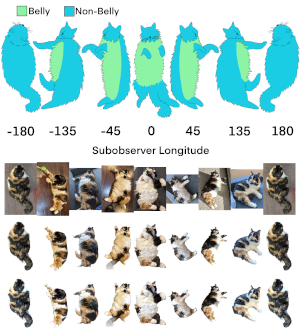Happy arXiv Fool's Day!
Posted by David Zaslavsky on — CommentsWhen scientists the world over turn their attention to the floofy objects on their keyboards and Taylor Swift’s emotional state, that means only one thing: time to make an update to the list of arXiv joke papers! That’s right, it’s April Fool’s Day 2021, academia style. Here’s my wrapup.

This time, with some help from Twitter, I found eleven submissions covering a wide range of fields. Representing the stalwart astro-ph, we have the aforementioned floofy object rotation paper and an infectious model of dark matter. From high energy theory, we have a prediction of when publication of conjectures is going to bring on the heat death of the universe. In the category of popular physics, there’s an investigation of curious behavior involving a laster pointer — with one of the best paper titles of all time — and a very practical study of how certain tasks always take longer than we think (and why I never finish writing blog posts). There are also two excellent artificial intelligence studies that definitively settle whether Jaffa cakes are cakes and tell you which Taylor Swift song you should be listening to. Taking an interesting “meta” perspective on arXiv Fool’s Day is a historical review of humor in science (which includes its own list of joke papers on arXiv). And finally, but possibly my favorite, “The Swapland”, a science newsletter chock full of, well, nonsense — I can’t possibly do it justice with a summary, you’ll just have to see for yourself.
If you like these, there’s plenty more to offer some welcome amusement. Check out the the whole list!
Let me know of any papers I’ve missed that should be added.
My thanks to Laura C. Mayorga for kindly granting permission to use the floofy object rotation figure in this blog post.